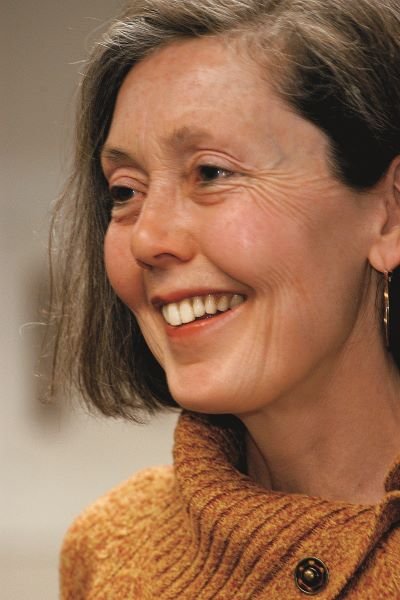The persuasive intuitions of ANNE CARSON
Photo by Peter Smith
Anne Carson is a poet, essayist, professor of Classics, and translator. Her new book, Wrong Norma, is “a stunning edition with images created by Carson. Several of the twenty-five startling poetic prose pieces have appeared in magazines and journals like The New Yorker and The Paris Review. As Carson writes: “Wrong Norma is a collection of writings about different things, like Joseph Conrad, Guantánamo, Flaubert, snow, poverty, Roget’s Thesaurus, my Dad, Saturday night. The pieces are not linked. That’s why I’ve called them ‘wrong.’”
Interview by Isabelle Sakelaris
You claim that the writings in Wrong Norma are not linked, but images, themes, and, potentially, characters persist throughout the collection. Perhaps the overlap I saw between the works was, like sounds shared between homonyms (to paraphrase a few lines from “WE’VE ONLY JUST BEGUN”), inevitable. Would you please elaborate on why you see these works as wrong or unrelated?
I meant that the pieces in the book were not written at the same time and were not intended to be read as a coherent organism or organic process. I suppose my own considerations and questions do overlap - I do not have a very large brain screen - but I had no single constitutive intention. Why this should be called “wrong” is another question.
In “ASPIRIN FOR TRAVELERS,” the speaker defines thinking as “when data coming in from the world passes through and out of the brain different than when it arrived” (141). Intuition and subconscious modes of thinking or noticing also appear frequently in these works. How do you define intuition in relation to thinking, and what is its purpose?
I do not know what intuition is. It seems to operate very speedily and often feels more persuasive than reasoned conclusions.
In “LECTURE ON THE HISTORY OF SKYWRITING,” the speaker paraphrases the Rig Veda hymns, which were passed down via performance: “Something only exists if consciousness perceives it as existing," and clarifies, "If someone did make a mistake in a ritual, a witness who noticed the error and who knew the correct text could mend the mistake on the sky of his mind and so make the cosmos perfect again, microphysically" (75). Does the idea of “mending” a perception apply to identity?
Mending is always a good possibility. And it has a good sound. I once did a performance whose background noise was provided by a man seated (amplified) in the corner of the stage, mending a cloth. This was [Robert] Currie’s [Carson’s husband -ed.] idea.
New Directions Publishing
In the same piece, the sky quotes composer John Cage: “Something has to be done to get us free of our memories and choices” (66). Do you agree? What can writers do to achieve this end? Do you think it’s possible and worth doing, or, as you’ve written in “EDDY,” is purification through art impossible?
John Cage was always trying to disarm or elude his ego. To surprise his own mind randomly. And he thought that randomness could be incorporated into works of art by means of what he called "chance operations." I doubt he regarded this as a "purification." But he did trust chance to find beauty.
Characters (or perhaps one character) who study stains—specifically blood splatters—appear a few times in these works. One describes, “You’re given the errors and chaos of how the answer went wrong, you work back to a right answer and maybe the original question” (143). Is it fair to call this a metaphor for writing?
No, it is a description of science, or [the] scientific method. Writing usually moves in the other direction (ending up “wrong”!)
Check out our other recent author interviews
Isabelle Sakelaris is an art writer and aspiring poet who lives and works in New York City.







